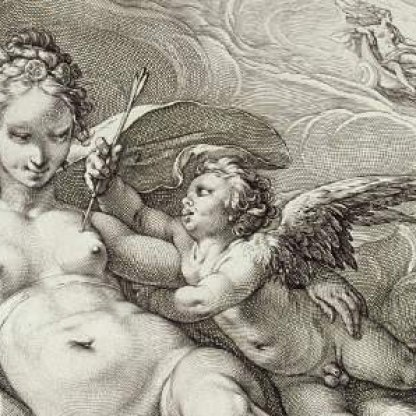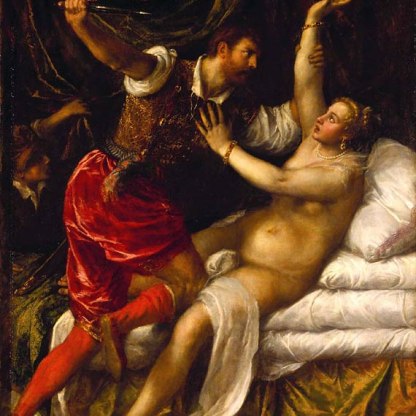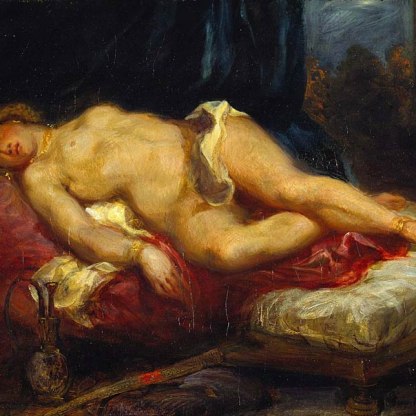Venus and Cupid in a Landscape

In sixteenth-century Venice, the female nude came into its own as an independent subject in painting. Women had appeared without their clothes in earlier Italian art, usually in subjects based on Greek and Roman mythology. But they had never before been invested with quite the same sensuality that the great Venetians Titian, Giorgione and Palma Vecchio gave to them. Venetian painters often presented these blonde, fully fleshed paragons of female beauty in the guise of Venus. This Roman goddess of love was usually show reclining either, as in Palma Vecchio's painting, in an idealised landscape, or on a divan or bed. A particularly fine painting by Titian in the Fitzwilliam [129], shows Venus and Cupid with a lute player, in what looks like the goddess's bedchamber.

Jacopo Palma was called 'Vecchio' – 'the old' – to distinguish him from his great-nephew of the same name. He was one of several painters from around the northern Italian town of Bergamo who settled in Venice in the early sixteenth century. If he was – and remains – somewhat overshadowed by the towering genius of his contemporary Titian, he nevertheless succeeded in establishing a flourishing workshop in the city, and he developed a recognisable and appealing style of his own.
The beautifully preserved colours here are typical of the best sixteenth-century Venetian painting: look at the delicate pink of the drapery on which the goddess lies, the yellow of the sash beneath the quiver of arrows, the various greens of the landscape and the blues of the sky and horizon.
The identity of the nude as Venus is confirmed by the presence of her son Cupid, the young, mischievous, winged archer. An arrow passes between the two of them, although it is not clear who is giving and who receiving. Given that the quiver is lying to Cupid’s right and he reaches towards Venus with his right hand, it is probable that he is handing the arrow to her. This might be the arrow that will accidentally wound Venus’ own breast and cause her to fall in love with the beautiful but tragic Cypriot prince, Adonis.
Venus, with her centrally parted blonde hair, her wide, full cheeks, her slightly pointed nose and her pale skin, has a recognisably 'Vecchian' face. The same model seems to have been used for a painting known as Flora, in the National Gallery in London. It has been suggested that she may have been a courtesan.
The goddess is entirely at ease here, reclining in the shade of a rock, making no effort to conceal her nudity. The relaxation that she feels with her own unclothed state has not, however, been shared over the years. In the nineteenth century, the Syndicate of the Fitzwilliam Museum, in order to preserve the blushes of any respectable ladies who might be visiting, thought it wise to hire a 'competent artist' to 'partially veil' this recumbent Venus.
Themes and periods
Data from our collections database
Queen Christina of Sweden, Rome (d. 1689); Orleans family; exh. for sale, London, Mr Bryan's Gallery, 26ff. Dec. 1798 (34), not sold; sale, London, Coxe, Burrell and Foster, Mr Bryan's Gallery, 14 Feb. 1800 (31), bt. Walton
Acquisition and important dates
- Method of acquisition: Bequeathed
- Dates: 1816
Dating
Maker(s)
- Palma, Jacopo il Vecchio Painter
Materials used in production
Read more about this recordStories, Contexts and Themes
Other highlight objects you might like
Suggested Curating Cambridge products
Sign up to our emails
Be the first to hear about our news, exhibitions, events and more…






